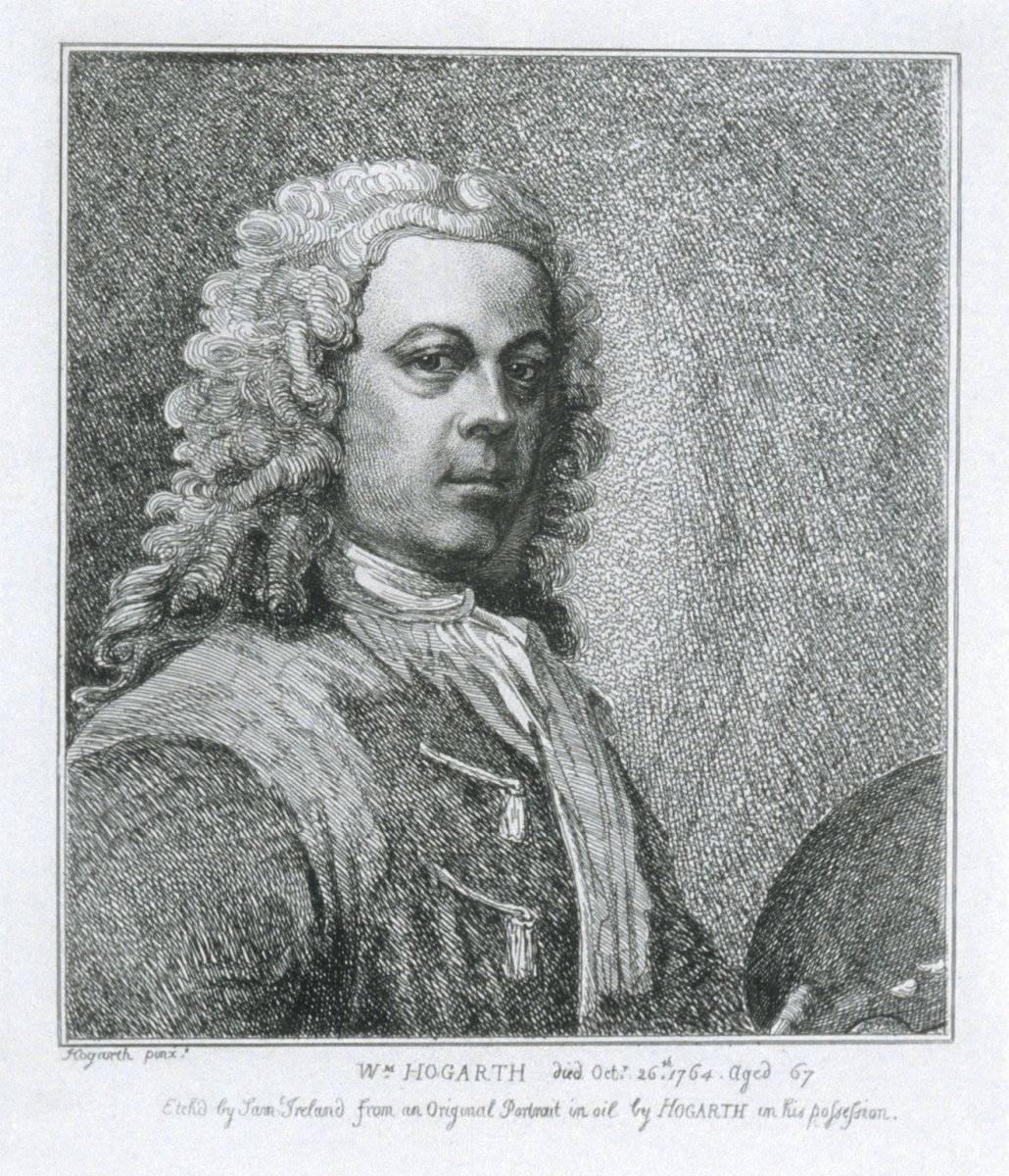William Hogarth (1697-1764) painter and engraver: ‘self portrait’

-
About the work
- Location
-
Country: UK
City: London
Place: Government Art Collection
This head and shoulders portrait of artist William Hogarth shows the sitter holding his pallet. The scribbled patterns of etched lines which make up the work point to the status of the engraver, Samuel Ireland, as an amateur etcher.
The print was published by Ireland as part of the second edition of his work titled ‘Graphic Illustrations of Hogarth, from Pictures, Drawings, and Scarce Prints in the possession of Samuel Ireland’. When Ireland’s collection was sold after his death, it reportedly included ‘many first sketches and finished pictures, by Hogarth, purchased by Mr. Ireland of Mrs. Hogarth’. This example may have been etched after Lot 452 in that sale, an oil painting described as ‘Hogarth’s own Portrait with Pallet’. However, Ireland’s attributions proved to be unreliable and doubt has been cast over whether this portrait is in fact after a Hogarth work at all.
-
About the artist
The portraits and social satires of William Hogarth, painter and engraver, have come to define the period in which he lived. His best known works include his series of satirical of paintings, such as ‘The Beggar’s Opera’ (c.1729, Birmingham City Art Gallery, private collection and National Gallery of Art, Washington) and ‘A Rake’s Progress’ (c.1734, Sir John Soane's Museum, London). He also painted formal portraits, including the philanthropist ‘Captain Thomas Coram’ (1740, Coram family, in the care of the Foundling Museum, London) and ‘The Graham Children’ (1742, National Gallery, London). Hogarth lived and worked in London for most of his life and was a major benefactor of the Foundling Museum during the 1740s, founded by Captain Coram.
Printmaker and writer Samuel Ireland first worked as a silk weaver in Spitalfields. By 1789 he was a merchant based in the Strand and from c.1758 he had a parallel career as a draughtsman and engraver. He exhibited at the Society of Artists in 1765 and the Royal Academy in 1782 and 1784. During the 1780s he etched plates after William Hogarth and others. He first published ‘Graphic Illustrations of Hogarth’ in 1790. From 1790 he also published travel books featuring his own illustrations. However, his son, William, made forged manuscript documents relating to Shakespeare and a volume of facsimiles was published in 1795. Ireland was widely considered to have committed fraud. He died from diabetes in 1800, always maintaining his innocence.
-
Explore
- Places
- Subjects
- palette, painter, artist (as Subject), male portrait, self-portrait, 18th century costume, coat, wig, cravat
- Materials & Techniques
- etching
-
Details
- Title
- William Hogarth (1697-1764) painter and engraver: ‘self portrait’
- Date
- 1801
- Medium
- Etching
- Dimensions
- height: 30.30 cm, width: 24.10 cm
- Acquisition
- Purchased from Grosvenor Prints, May 2002
- Provenance
- With Grosvenor Prints, London; from whom purchased by the Government Art Collection in May 2002
- GAC number
- 17700